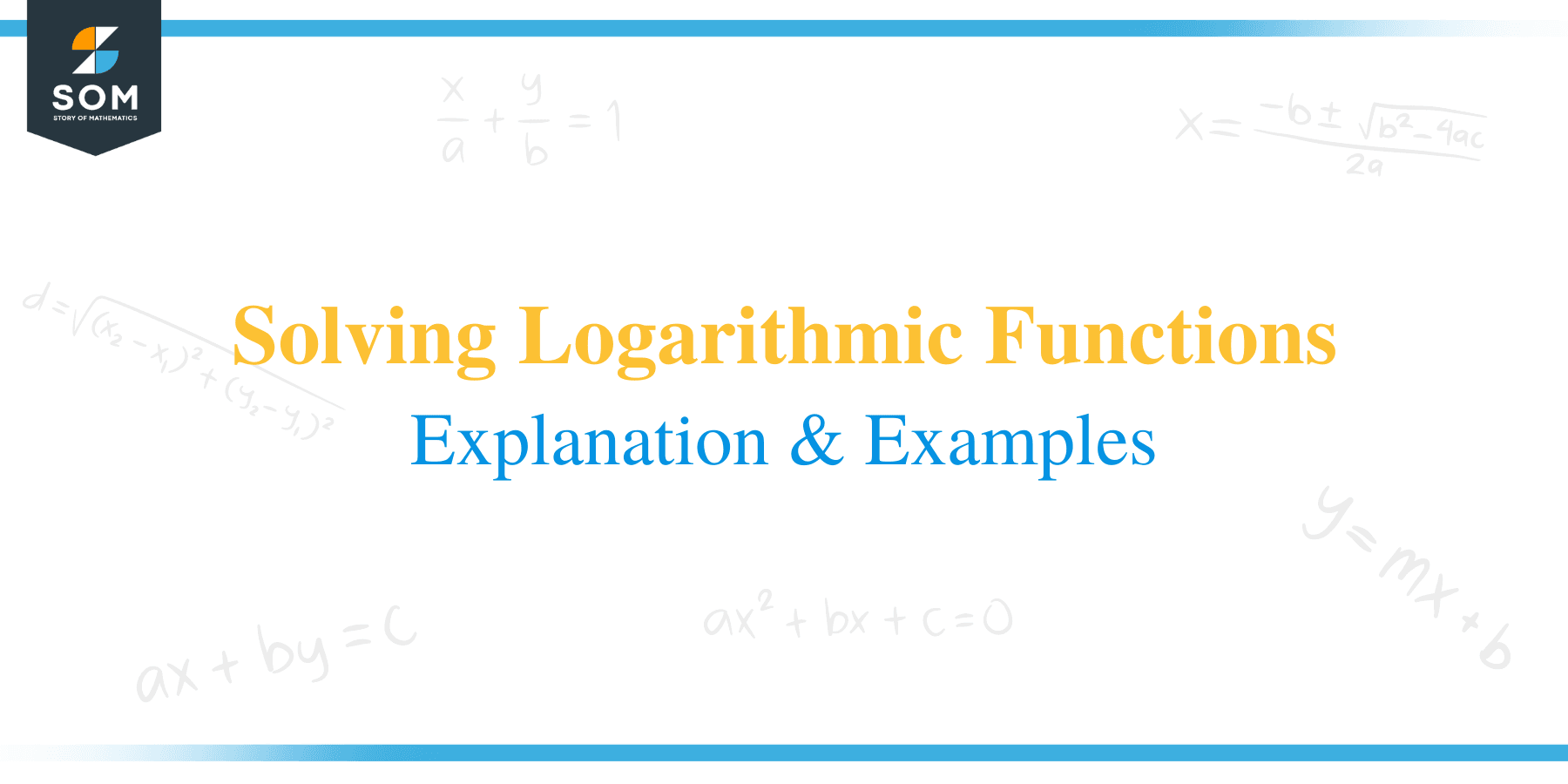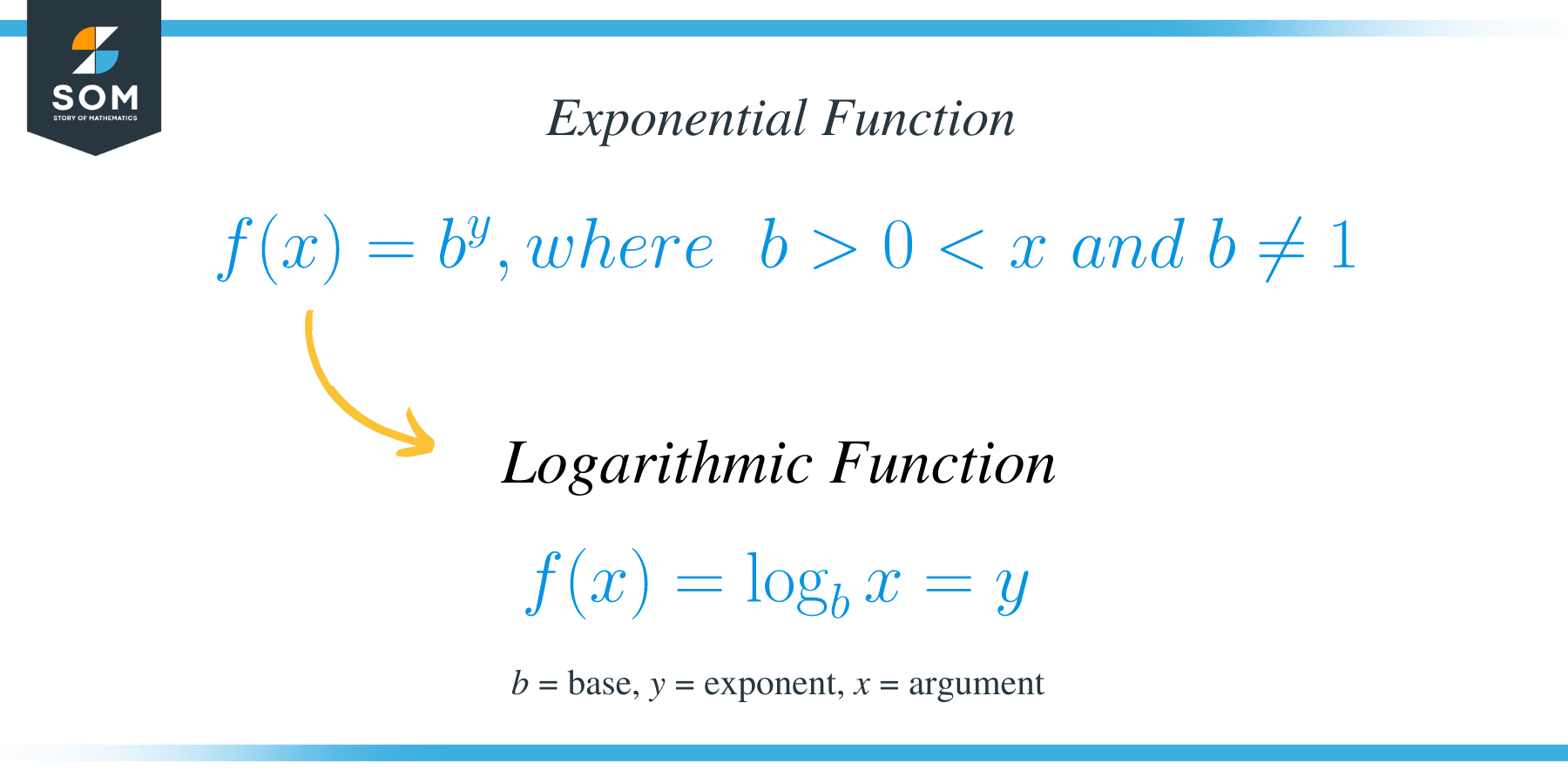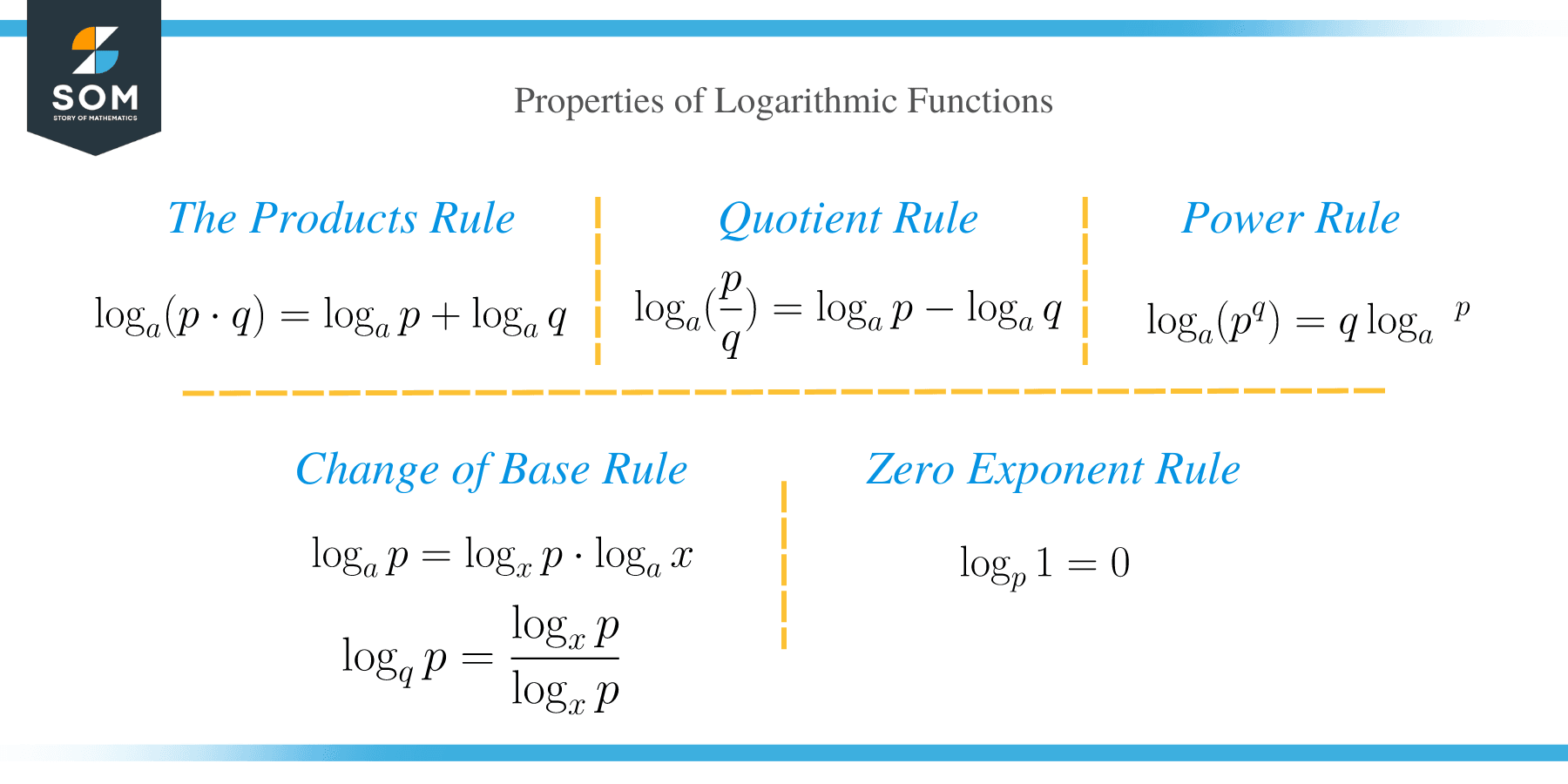- Home
- >
- Solving Logarithmic Functions – Explanation & Examples
JUMP TO TOPIC
Solving Logarithmic Functions – Explanation & Examples
 In this article, we will learn how to evaluate and solve logarithmic functions with unknown variables.
In this article, we will learn how to evaluate and solve logarithmic functions with unknown variables.
Logarithms and exponents are two topics in mathematics that are closely related. Therefore it is useful we take a brief review of exponents.
An exponent is a form of writing the repeated multiplication of a number by itself. An exponential function is of the form f (x) = b y, where b > 0 < x and b ≠ 1. The quantity x is the number, b is the base, and y is the exponent or power.
For example, 32 = 2 × 2 × 2 × 2 × 2 = 22.
The exponential function 22 is read as “two raised by the exponent of five” or “two raised to power five” or “two raised to the fifth power.”
On the other hand, the logarithmic function is defined as the inverse function of exponentiation. Consider again the exponential function f(x) = by, where b > 0 < x and b ≠ 1. We can represent this function in logarithmic form as:
y = log b x
Then the logarithmic function is given by;
f(x) = log b x = y, where b is the base, y is the exponent, and x is the argument.
The function f (x) = log b x is read as “log base b of x.” Logarithms are useful in mathematics because they enable us to perform calculations with very large numbers.
How to Solve Logarithmic Functions?
To solve the logarithmic functions, it is important to use exponential functions in the given expression. The natural log or ln is the inverse of e. That means one can undo the other one i.e.
ln (e x) = x
e ln x = x
To solve an equation with logarithm(s), it is important to know their properties.
Properties of logarithmic functions
Properties of logarithmic functions are simply the rules for simplifying logarithms when the inputs are in the form of division, multiplication, or exponents of logarithmic values.
Some of the properties are listed below.
- Product rule
The product rule of logarithm states the logarithm of the product of two numbers having a common base is equal to the sum of individual logarithms.
⟹ log a (p q) = log a p + log a q.
- Quotient rule
The quotient rule of logarithms states that the logarithm of the two numbers’ ratio with the same bases is equal to the difference of each logarithm.
⟹ log a (p/q) = log a p – log a q
- Power rule
The power rule of logarithm states that the logarithm of a number with a rational exponent is equal to the product of the exponent and its logarithm.
⟹ log a (p q) = q log a p
- Change of Base rule
⟹ log a p = log x p ⋅ log a x
⟹ log q p = log x p / log x q
- Zero Exponent Rule
⟹ log p 1 = 0.
Other properties of logarithmic functions include:
- The bases of an exponential function and its equivalent logarithmic function are equal.
- The logarithms of a positive number to the base of the same number are equal to 1.
log a a = 1
- Logarithms of 1 to any base are 0.
log a 1 = 0
- Log a0 is undefined
- Logarithms of negative numbers are undefined.
- The base of logarithms can never be negative or 1.
- A logarithmic function with base 10is called a common logarithm. Always assume a base of 10 when solving with logarithmic functions without a small subscript for the base.
Comparison of exponential function and logarithmic function
Whenever you see logarithms in the equation, you always think of how to undo the logarithm to solve the equation. For that, you use an exponential function. Both of these functions are interchangeable.
The following table tells the way of writing and interchanging the exponential functions and logarithmic functions. The third column tells about how to read both the logarithmic functions.
| Exponential function | Logarithmic function | Read as |
| 82 = 64 | log 8 64 = 2 | log base 8 of 64 |
| 103 = 1000 | log 1000 = 3 | log base 10 of 1000 |
| 100 = 1 | log 1 = 0 | log base 10 of 1 |
| 252 = 625 | log 25 625 = 2 | log base 25 of 625 |
| 122 = 144 | log 12 144 = 2 | log base 12 of 144 |
Let’s use these properties to solve a couple of problems involving logarithmic functions.
Example 1
Rewrite exponential function 72 = 49 to its equivalent logarithmic function.
Solution
Given 72 = 64.
Here, the base = 7, exponent = 2 and the argument = 49. Therefore, 72 = 64 in logarithmic function is;
⟹ log 7 49 = 2
Example 2
Write the logarithmic equivalent of 53 = 125.
Solution
Base = 5;
exponent = 3;
and argument = 125
53 = 125 ⟹ log 5 125 =3
Example 3
Solve for x in log 3 x = 2
Solution
log 3 x = 2
32 = x
⟹ x = 9
Example 4
If 2 log x = 4 log 3, then find the value of ‘x’.
Solution
2 log x = 4 log 3
Divide each side by 2.
log x = (4 log 3) / 2
log x = 2 log 3
log x = log 32
log x = log 9
x = 9
Example 5
Find the logarithm of 1024 to the base 2.
Solution
1024 = 210
log 2 1024 = 10
Example 6
Find the value of x in log 2 (x) = 4
Solution
Rewrite the logarithmic function log 2(x) = 4 to exponential form.
24 = x
16 = x
Example 7
Solve for x in the following logarithmic function log 2 (x – 1) = 5.
Solution
Rewrite the logarithm in exponential form as;
log 2 (x – 1) = 5 ⟹ x – 1 = 25
Now, solve for x in the algebraic equation.
⟹ x – 1 = 32
x = 33
Example 8
Find the value of x in log x 900 = 2.
Solution
Write the logarithm in exponential form as;
x2 = 900
Find the square root of both sides of the equation to get;
x = -30 and 30
But since, the base of logarithms can never be negative or 1, therefore, the correct answer is 30.
Example 9
Solve for x given, log x = log 2 + log 5
Solution
Using the product rule Log b (m n) = log b m + log b n we get;
⟹ log 2 + log 5 = log (2 * 5) = Log (10).
Therefore, x = 10.
Example 10
Solve log x (4x – 3) = 2
Solution
Rewrite the logarithm in exponential form to get;
x2 = 4x – 3
Now, solve the quadratic equation.
x2 = 4x – 3
x2 – 4x + 3 = 0
(x -1) (x – 3) = 0
x = 1 or 3
Since the base of a logarithm can never be 1, then the only solution is 3.
